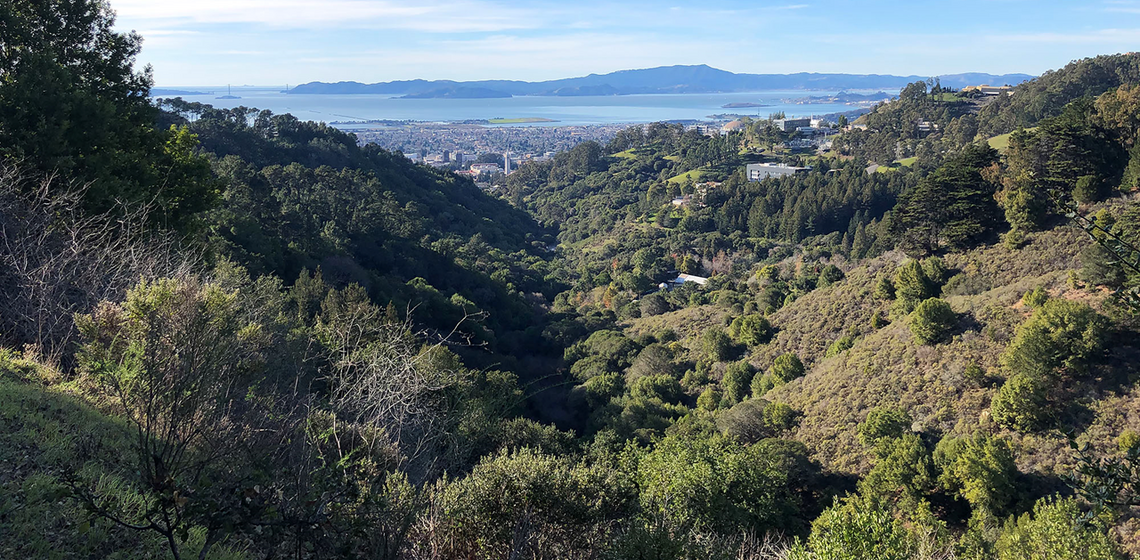The Wildland Vegetative Fuel Management Plan (WVFMP) directs the treatment of vegetation that could become fire fuel within the UC Berkeley Hill Campus (or Plan Area) located east of the Campus Park. It serves as one component of UC Berkeley’s range of actions to substantially reduce wildfire risk and minimize the potential for harmful effects of wildfire on people, property, and natural resources within the Plan Area, as well as on adjacent public and private land and throughout the greater East Bay region.
The Wildland Vegetative Fuel Management Plan (WVFMP) is proposed by UC Berkeley to treat vegetation that could become fire fuel within the Plan Area. The WVFMP includes implementation of four vegetation treatment types across the Hill Campus: 1) evacuation support treatments, 2) temporary refuge areas, 3) fuel break treatments, and 4) fire hazard reduction treatments. Five different vegetation treatment activities would be used to implement the four vegetation treatment types: 1) manual treatment, 2) mechanical treatment, 3) prescribed broadcast burning, 4) managed herbivory (livestock grazing), and 5) targeted ground application of herbicides. UC Berkeley would implement vegetation treatment activities on an average of 200 acres per year within the Plan Area. Up to 600 acres of the 800-acre Plan Area would be treated under the WVFMP because 200 acres are inaccessible or are not expected to carry fire, due to a lack of vegetative fuel.
UC Berkeley is also proposing nine Identified Treatment Projects comprising two fuel break projects, four temporary refuge areas, and three fire hazard reduction projects in the Plan Area. The four treatment types and five treatment activities are reviewed for use throughout the Plan Area at a programmatic level, and the nine Identified Treatment Projects are studied at a project level of detail in the EIR. The near-term implementation of the Identified Treatment Projects along with the longer-term implementation of treatment activities studied at a program level together comprise the proposed “project,” as defined in State CEQA Guidelines Section 15378.
Additional Information
Wildland Vegetative Fuel Management Plan:
- Wildland Vegetative Fuel Management Plan (PDF) - July 2020
Scoping Meeting:
- Presentation for Public Scoping Meeting (PDF) - December 2, 2019

